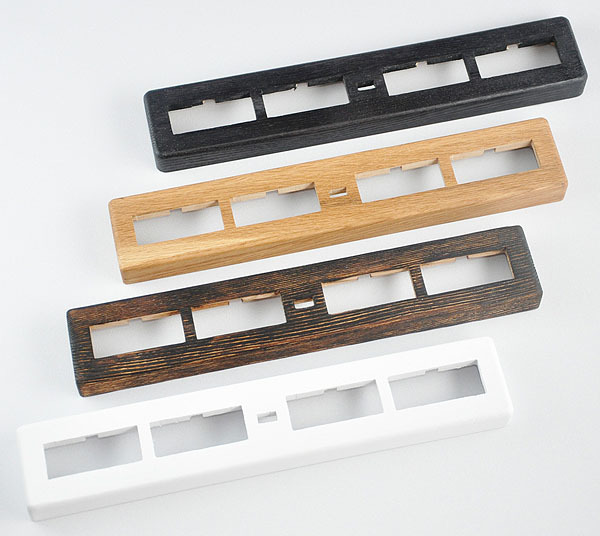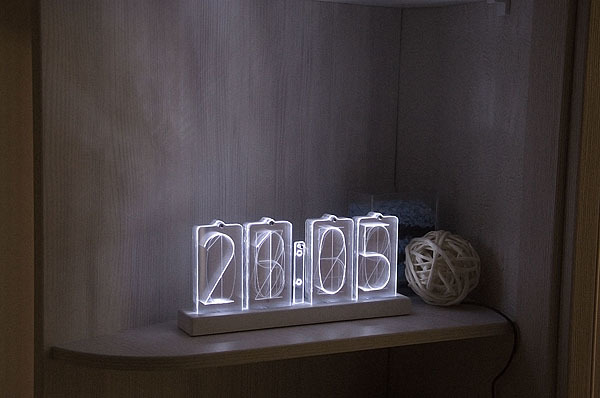Stupid watches are not so stupid

BEFORE AND AFTER - feel the difference.
Almost a year ago, I wrote about my own watch .
That article ended with the phrase: “Now in my plans, when nothing hurries me, to make the device more technological and solve a couple of issues that surfaced during the creation of the first model.” As they say - less than a year has passed.
The very first hours, as a result, migrated to the son’s room, because they create soft, comfortable lighting and are not afraid to sleep. And this light was just bothering me. And now in my bedroom there is a watch of version 2.0, codenamed LUMO. And they are already a little smarter.
Since I had a micro-queue of those who wanted such a watch for myself, I had to think about how to improve it, while simplifying their manufacture and assembly, as well as lowering the cost.
During the rethinking of the design, several interesting issues had to be solved.
Question No. 1 The
tone of the whole design was asked by electronics, or rather its layout. At first there was an idea, as in the first article, to make the numbers separate modules and somehow connect them to the main board. But this entailed the manufacture of 5 boards and some kind of tire, while I wanted to make the stand the smallest possible thickness and size (the same trend: thinner - cooler). And easily accessible budget connectors could not boast of compactness.
The idea evolved into 5 boards, plus a bus-board end to the other.
I rushed about this idea of a universal digital module for quite some time, until one good and smart person Alexander pushed me out of this mental “rut”. He tells me: “One board is simpler and cheaper, but for example, there will be a different version of the clock - you will make another board.” Having stumbled a bit in PCB software and realizing that I completely forgot everything, I decided to trust the professional - a good and smart person Alexander. And he took up the following question.
Question number 2
How to divide the light flux more elegantly than the gaskets between the plate-numbers from the black package? Yes, there was a black plastic bag, then black self-adhesive, everything was not right. In addition to fussing with gluing, the film also added thickness to the base of the sandwich from the numbers. Then it was impossible to get these cells on the LEDs. Be sure one of the jumpers was bent and someone shone in the wrong place. Aluminum can is the solution! And tough and the light does not pass and ... also nonsense. By the way, I didn’t find the cans, I had to buy the cheapest beer and pour it into the toilet - creativity required victims. There were a lot of victims. Only unsuccessful options for plexiglass plates have accumulated several packages.
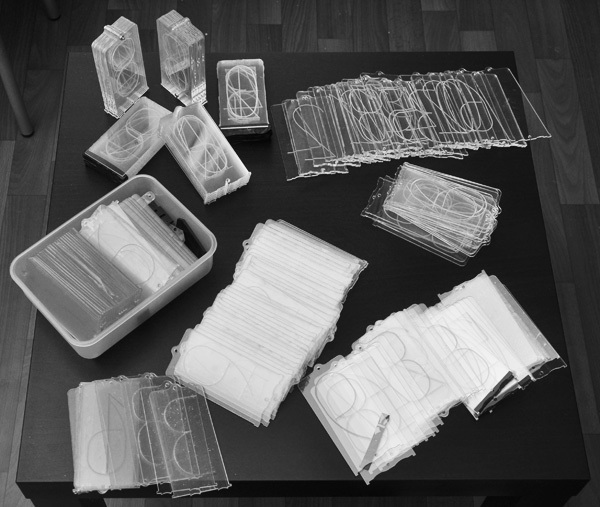
A bit of marriage
But in the end, I came up with an elegant solution. And immediately the whole structure grew together and assembled like a puzzle. Better to see once than read a hundred times.


A circuit board is mounted on this plane and everything is screwed into the same holes.
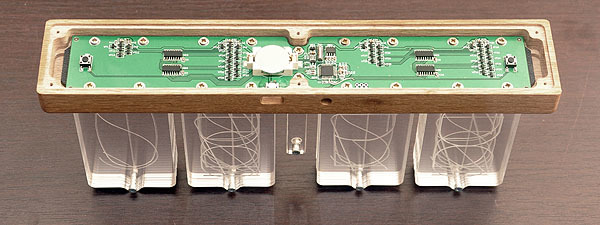
Question No. 3
Where to put the buttons? I did not like the option with buttons on the back of the case because I had to make two extra holes, except for the windows for the light sensor and the connector. Yes, and press them would not be very convenient. Here the solution was born pretty quickly: the buttons moved down. We also managed to carefully cover them. It has become convenient, aesthetically pleasing and technologically advanced.
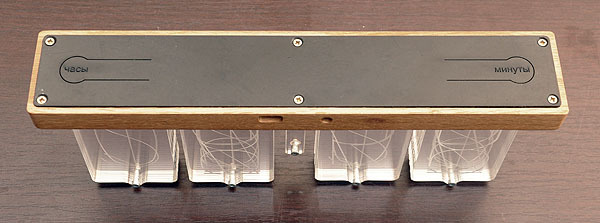
Question No. 4
I want a night light - I do not want a night light.
Above, I mentioned the light sensor, I added it, as I was going to. The watch began to adjust its brightness depending on the ambient lighting.
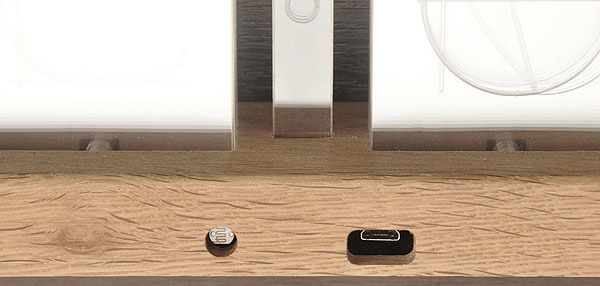
But I wanted to be able to use them as a night lamp if desired. Here, software methods have already been used. The principle of operation is as follows: the maximum brightness is constant, and the minimum (which at minimum illumination) can be adjusted. The minimum brightness is adjusted with the same buttons as the time. When the illumination is above a certain threshold - the time is set, when below - the minimum brightness. And then it turned out to kill two birds with one stone. It was not clear at what point the illumination crosses this threshold, and even the blinking of the second points at night annoyed me. I made sure that under light below the threshold, the dots do not blink, but simply glow. After that, it became clear when the brightness was adjusted (first hare), and the blinking stopped interfering with sleep (second hare).
At the moment, the board is a little redone, several bugs are fixed. For example, a controller power supervisor has been added since when the power supply connected to the watch is connected to the socket, the controller sometimes did not start correctly.
The connector decided to make microUSB, because, it seems to me, this is the most common connector to date. It will be possible to recharge the phone with a power supply from the watch or vice versa, connect the watch to mobile charging. Despite the power supply of the watch from the mains, it has a battery and the time does not need to be set again after a trip.
I made several options for the color of the case and tried LEDs with warm light. Corrected a little font, but it's for my taste.
While the design and functionality completely satisfy me and, most importantly, I really like them. And not just me.
